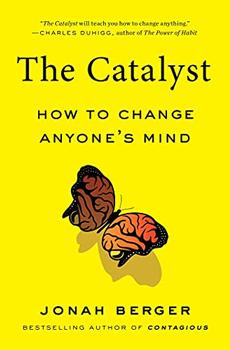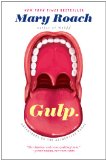Summary | Excerpt | Discuss | Reviews | Read-Alikes | Genres & Themes | Author Bio

How Little Things Can Make A Big Difference
by Malcolm GladwellLooks at why major changes in our society so often happen suddenly and unexpectedly.
Why did crime in New York drop so suddenly in the mid-90s? How does an unknown novelist end up a bestselling author? Why is teenage smoking out of control, when everyone knows smoking kills? What makes TV shows like Sesame Street so good at teaching kids how to read? Why did Paul Revere succeed with his famous warning?
In this brilliant and groundbreaking book, New Yorker writer Malcolm Gladwell looks at why major changes in our society so often happen suddenly and unexpectedly. Ideas, behavior, messages, and products, he argues, often spread like outbreaks of infectious disease. Just as a single sick person can start an epidemic of the flu, so too can a few fare-beaters and graffiti artists fuel a subway crime wave, or a satisfied customer fill the empty tables of a new restaurant. These are social epidemics, and the moment when they take off, when they reach their critical mass, is the Tipping Point.
In The Tipping Point, Gladwell introduces us to the particular personality types who are natural pollinators of new ideas and trends, the people who create the phenomenon of word of mouth. He analyzes fashion trends, smoking, children's television, direct mail and the early days of the American Revolution for clues about making ideas infectious, and visits a religious commune, a successful high-tech company, and one of the world's greatest salesmen to show how to start and sustain social epidemics.
The Tipping Point is an intellectual adventure story written with an infectious enthusiasm for the power and joy of new ideas. Most of all, it is a road map to change, with a profoundly hopeful message--that one imaginative person applying a well-placed lever can move the world.
 Commissioner William J. Bratton
.. a vital and 'must read' addition to the on-going debate about what really causes crime and disorder and how best to deal with it.
Commissioner William J. Bratton
.. a vital and 'must read' addition to the on-going debate about what really causes crime and disorder and how best to deal with it. George Stephanopoulos
Hip and hopeful, The Tipping Point, is like the idea it describes concise, elegant but packed with social power. A book for anyone who cares about how society works and how we can make it better.
George Stephanopoulos
Hip and hopeful, The Tipping Point, is like the idea it describes concise, elegant but packed with social power. A book for anyone who cares about how society works and how we can make it better. Michael Lewis Author of Liar's Poker and The New New Thing
What someone once said about the great Edmund Wilson is as true of Malcolm Gladwell he gives ideas the quality of action. Here he's written a wonderful page turner about a fascinating idea that should effect the way every thinking person thinks about the world around him.
Michael Lewis Author of Liar's Poker and The New New Thing
What someone once said about the great Edmund Wilson is as true of Malcolm Gladwell he gives ideas the quality of action. Here he's written a wonderful page turner about a fascinating idea that should effect the way every thinking person thinks about the world around him.
If you liked The Tipping Point, try these:

by Jonah Berger
Published 2022
From the author of New York Times bestsellers Contagious and Invisible Influence comes a revolutionary approach to changing anyone's mind.

by Mary Roach
Published 2014
The irresistible, ever-curious, and always best-selling Mary Roach returns with a new adventure to the invisible realm we carry around inside.